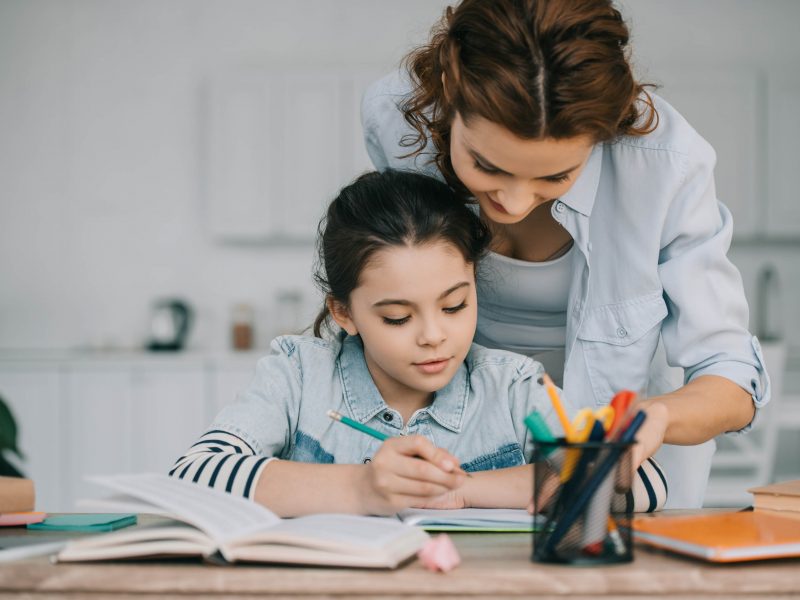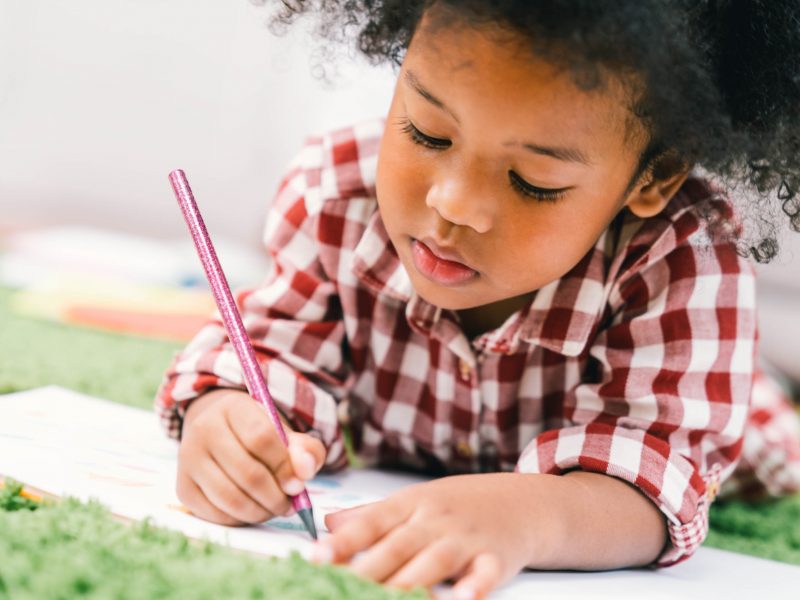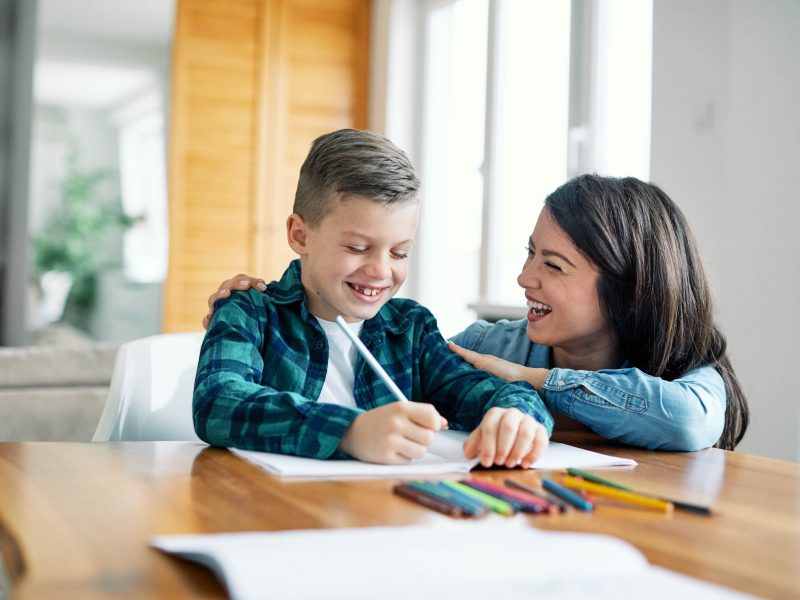
Incorporating the Benefits of Touch as Your Child Grows Out of Hugs and Snuggles
Anyone who has ever had a massage or snuggled a baby knows there must be benefits to human touch, but is there real science to back up our daily experience?
Dacher Keltner, Ph.D., director of the Greater Good Science Center and professor of psychology at UC Berkeley, cites studies showing that touch can:
- dramatically increase newborn preemies’ ability to gain weight,
- help infants grow up to be calmer and more stress-resilient, with stronger immune systems
- Reduce pain in pregnant women and alleviate prenatal depression
- activate the brain’s orbitofrontal cortex and the vagus nerve, increasing feelings of compassion and building cooperative relationships
- Signal safety, trust and soothing feelings
- Eliminate the body’s negative response to stress and threats
- Make students more likely to take academic risks and participate in class
The science of touch convincingly suggests that we’re wired to—we need to—connect with other people on a basic physical level. To deny that is to deprive ourselves of some of life’s greatest joys and deepest comforts.
David Keltner
Given all the obvious benefits of touch, this has led me to think a lot lately about how to make sure my children are receiving enough touch in their daily life.
Our current culture is one of virtual connection, screen time and litigiousness that makes people afraid to touch anyone they don’t know very well. Other than in their family life, I believe children aren’t receiving much touch out in the world.
So it’s my job to make sure I provide the soothing, stabilizing, de-stressing, caring, nurturing benefits of touch to my children.
That’s all good and well from the age of 0 to 5 or so, when children generally love to be held and snuggled and are open to help with dressing, feeding, bathing, seat belt buckling and all kids of daily things that build in constant touch. But at a certain point, children start wanting their independence and are ready to be “grown-up”. We parents start hearing things like “Don’t kiss me goodbye”, “You’re hugs are embarrassing me”, or “I don’t need to snuggle tonight.”
It can be heartbreaking to head into this new stage of independence with our children, when it means giving up a good portion of our physical connection with them. How can we keep a physical connection with our children, so our hearts break less and so they get the benefits of human touch as they continue to grow — through a period of time when they’ll begin navigating parts of the world independently and, I’d argue, need the benefits of touch more than ever?
Bring touch and all its benefits to your daily family life
Here are many great ways to make sure your children get the physical touch they need while still maintaining their independence and “growing up”!
- HIGH-FIVES, FIST BUMPS AND PATS ON THE BACK These are small, quick touches, but a lot of research shows that even quick touches like a pat on the back can have big benefits. So fit them in whenever you can.
— - TICKLE TIME OR WRESTLE TIME – Our G-man is definitely growing up and lessening his interest is hugs and snuggles, but we always know when he’s had a rough day or is needing reassurance, security and to fill up his touch reserves — On days like these, he always asks for “tickle time”. At 7 and 8 years old, wrestling around with mom and dad and laughing like crazy while fighting off tickles is a “respectable” way of having close physical touch and always makes him act more even-keel, calm, happy and lessens worries and daily drama.
— - LEANING ON A PARENT WHILE WATCHING TV OR READING TOGETHER The watching or reading takes the focus off of the snuggling and makes it more “big kid acceptable” (versus snuggling at bedtime, for instance). Also, the phrase “leaning on each other” has a more grown-up, respectable feel than “snuggling”, so a simple change of wording may make it more palatable.
— - A BACK RUB OR MASSAGE G-man is just about to turn 8, and he’s not into snuggling at bedtime anymore. While he does want us to lay with him for a few minutes, he scoots away from any touch or hand on the back. However, he loves a spine massage, foot rub, hand rub, shoulder massage, so I try to offer one for a minute or two each evening as part of our bedtime routine.
— - DO YOUR CHILD’S HAIR/PLAY HAIR SALON/GIVE A HEAD MASSAGE Doing your child’s hair (which can absolutely include boys: make a spikey hairdo, gel up a mohawk, etc.) gives lots of time for physical touch. If hair-do time, especially for those dealing with long tangly hair, is filled with angst, try framing it as “let’s play hair salon” or adding a head massage to the detangling and styling – your child gets the benefits of extra touch and the whole thing may just become calmer and more pleasurable.
— - CREATE A SPECIAL SECRET HANDSHAKE This is a totally “cool” and even teenage-approved way to touch. Make it a long secret handshake if you’d like to have more contact time. (wink, wink)
— - MAKE A “BEFORE WE LEAVE THE HOUSE” GOODBYE ROUTINE Some children are in the stage where they are still up for hugs or even kisses, but they don’t want to be doing it in front of their friends (usually around 1st to 3rd grade, but it varies by child). If that’s your child, co-create a routine with them where you give hugs, kisses, etc. before walking out the front door or before getting out of the car at the school drop off, for instance. This allows them (and you!) to get in that special contact time, but doesn’t cause them to lose face with friends or be embarrassed for any reason.
— - SWING TOGETHER Some children will outgrow this faster than other items on this list, but if they are up for it, this is a great way for some human contact time. Find a swing, have your child hop on your lap and swing together. It is relaxing and joyful AND you get the power of touch included. If your child isn’t into sitting on your lap, even just pushing them on a swing includes nice touch with your hands on their back.
— - GAMES INVOLVING TOUCH
- thumb wrestling or arm wrestling (holding hands, but in an intrepid and “non-babyish” way)
- any game of tag (especially blob tag since it involves groups of people running around with linked arms)
- sardines (hiding with several people in one small spot)
- hot hands (One person lays out their hands with their palms facing up. The other player places their hands on that person’s hands but with the palms facing down. The bottom person tries to bring their hands around and slap the top person’s hands before their opponent can pull them away. If the bottom person successfully slaps their opponent’s hands, they stay on bottom. If they miss, they switch spots.)
Which of these forms of touch will you incorporate this week? Make a plan and jot something down for a specific time on your calendar. Perhaps “Hair salon with the kids” on Saturday morning, or “play thumb wars” after school on Tuesday. Having a specific action listed at a specific time on your calendar increases follow-through exponentially, so write it down now. 🙂
If you have another great idea for keeping touch alive even as kids grow and mature, I’d LOVE to hear it – I’m always looking for fun and “grown-up” ways to bond with my little (but almost big) ones!
With a big (unfortunately virtual) hug,





